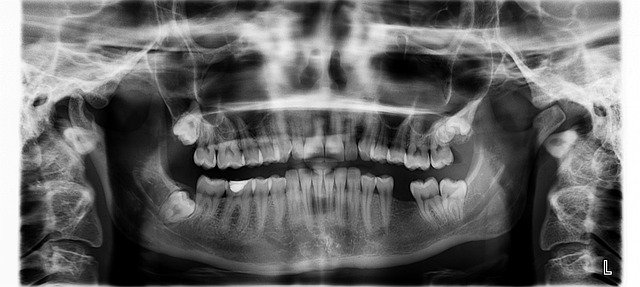Spotting the Signs Early: Why a Bipolar Test Can Change Your Life
Bipolar disorder is a complex mental health condition that affects millions of people worldwide. Early detection and diagnosis can significantly impact treatment outcomes and quality of life. A bipolar test, when used appropriately, can be a crucial tool in identifying the signs and symptoms of this disorder. This article explores the importance of early detection, the various types of bipolar tests available, and how they can potentially change your life or that of a loved one.

What is bipolar disorder and how does it affect daily life?
Bipolar disorder, formerly known as manic depression, is a mental health condition characterized by extreme mood swings that include emotional highs (mania or hypomania) and lows (depression). These mood episodes can significantly impact a person’s energy levels, activity, behavior, and ability to function in daily life. During manic episodes, individuals may feel euphoric, have increased energy, and engage in risky behaviors. Conversely, depressive episodes can lead to feelings of hopelessness, loss of interest in activities, and difficulty concentrating.
The impact of bipolar disorder on daily life can be profound. It can affect relationships, work performance, and overall quality of life. Many individuals with bipolar disorder struggle to maintain stable employment, have difficulties in personal relationships, and may experience financial problems due to impulsive spending during manic episodes. The unpredictable nature of mood swings can also lead to social isolation and a decreased ability to engage in regular activities.
What are the common signs and symptoms of bipolar disorder?
Recognizing the signs and symptoms of bipolar disorder is crucial for early detection and intervention. The symptoms can vary depending on the type of episode (manic or depressive) and the individual. Common signs of a manic episode include:
-
Increased energy and activity
-
Decreased need for sleep
-
Racing thoughts and rapid speech
-
Grandiose ideas and inflated self-esteem
-
Impulsive and risky behavior
-
Irritability or agitation
Depressive episode symptoms may include:
-
Persistent feelings of sadness or hopelessness
-
Loss of interest in activities once enjoyed
-
Changes in appetite and sleep patterns
-
Fatigue and loss of energy
-
Difficulty concentrating and making decisions
-
Thoughts of death or suicide
It’s important to note that these symptoms can vary in intensity and duration, and not all individuals will experience all symptoms.
Why is early detection of bipolar disorder crucial?
Early detection of bipolar disorder is critical for several reasons. First, it allows for timely intervention and treatment, which can significantly improve long-term outcomes. When left untreated, bipolar disorder can worsen over time, leading to more severe and frequent mood episodes. Early diagnosis and treatment can help stabilize mood swings, reduce the risk of complications, and improve overall quality of life.
Additionally, early detection can prevent misdiagnosis. Bipolar disorder is often mistaken for other mental health conditions, such as depression or anxiety disorders. Misdiagnosis can lead to inappropriate treatment, which may exacerbate symptoms or trigger manic episodes in some cases. Proper diagnosis through early detection ensures that individuals receive the most appropriate and effective treatment for their specific condition.
What types of bipolar tests are available?
There are several types of bipolar tests available to aid in the diagnosis of the disorder. It’s important to note that no single test can definitively diagnose bipolar disorder, and a comprehensive evaluation by a mental health professional is necessary for an accurate diagnosis. Some common types of bipolar tests include:
-
Mood Disorder Questionnaire (MDQ): A brief screening tool that assesses lifetime history of manic or hypomanic symptoms.
-
Bipolar Spectrum Diagnostic Scale (BSDS): A self-report scale that helps identify bipolar spectrum disorders.
-
Structured Clinical Interview for DSM-5 (SCID-5): A comprehensive diagnostic interview conducted by a trained clinician.
-
Young Mania Rating Scale (YMRS): A clinician-administered scale to assess the severity of manic symptoms.
-
Hamilton Depression Rating Scale (HDRS): A tool used to evaluate the severity of depressive symptoms.
These tests, along with a thorough clinical assessment, family history, and medical evaluation, help mental health professionals make an accurate diagnosis.
How can a bipolar self-test help in early detection?
While a professional diagnosis is essential, bipolar self-tests can play a valuable role in early detection. These self-assessment tools can help individuals recognize potential symptoms and prompt them to seek professional help. Self-tests are typically online questionnaires that ask about mood, behavior, and experiences related to bipolar disorder. They can be easily accessed and completed in the privacy of one’s home, making them a convenient first step in the diagnostic process.
Self-tests can raise awareness about bipolar disorder and its symptoms, encouraging individuals to pay closer attention to their mood patterns. They can also help people articulate their experiences more effectively when discussing concerns with a healthcare provider. However, it’s crucial to understand that self-tests are not a substitute for professional diagnosis and should be used as a screening tool rather than a definitive diagnostic measure.
What should you do if a bipolar test suggests possible disorder?
If a bipolar test, whether administered by a professional or taken as a self-assessment, suggests the possibility of bipolar disorder, it’s essential to take the next steps towards a proper diagnosis and treatment. The first and most important action is to consult with a mental health professional, such as a psychiatrist or psychologist who specializes in mood disorders. They can provide a comprehensive evaluation, including a detailed medical history, physical examination, and possibly additional psychological tests.
During this process, it’s crucial to be open and honest about your symptoms, experiences, and any family history of mental health conditions. Keep in mind that a positive result on a bipolar test does not necessarily mean you have bipolar disorder, as other conditions can present similar symptoms. Conversely, a negative result doesn’t rule out the possibility of bipolar disorder if symptoms are present.
If a diagnosis of bipolar disorder is confirmed, your healthcare provider will work with you to develop an appropriate treatment plan. This may include a combination of medication, psychotherapy, lifestyle changes, and support groups. Remember that early intervention and consistent treatment can significantly improve the prognosis and help manage the symptoms effectively.
In conclusion, bipolar tests play a crucial role in the early detection and management of bipolar disorder. While they are not definitive diagnostic tools, they can serve as valuable screening instruments that prompt further evaluation and timely intervention. By recognizing the signs early and seeking professional help, individuals with bipolar disorder can take significant steps towards managing their condition and improving their overall quality of life. Whether you’re concerned about yourself or a loved one, understanding the importance of early detection and the available testing options can be a life-changing first step on the path to better mental health.
This article is for informational purposes only and should not be considered medical advice. Please consult a qualified healthcare professional for personalized guidance and treatment.




